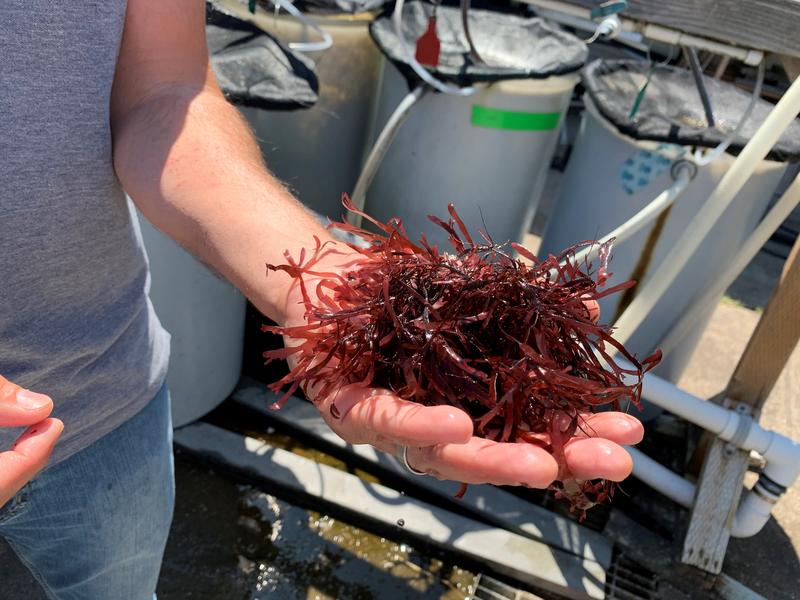
Whatever Happened To The Sensational Seaweed That Supposedly Tastes Like Bacon?
Listen
Oregon State University created something of a sensation back in 2015 when researchers announced they discovered and patented “seaweed that tastes like bacon.” Four years later, the hard work of commercialization continues, but guilt-free bacon from the sea remains elusive.
The common name for this red seaweed (Palmaria mollis) is dulse. In 2015, scores of stories flashed around the globe, such as “Dulse: The new, sustainable superfood.” Headline writers crowed about “the next big thing,” “the new kale,” “the magical bacon unicorn of vegetables,” or combined it all in one: “Move Over, Kale: Dulse is the Superfood of the Future.”
For now, kale growers need not be worried. The path to commercial success for farmed dulse is proving difficult and long despite the enviable publicity.
“I think the good news is that things haven’t stopped,” said Chris Langdon, aquaculture researcher at OSU’s Hatfield Marine Science Center. “There’s still a lot of excitement out there.”
Langdon said two companies have licensed the fast-growing strain of seaweed bred in his lab. The startup Oregon Dulse leased space from the Port of Bandon to set up a shoreside seaweed farm using tanks open to the sun. Oregon Sea Farms is similarly active in Port Orford.
Oregon Dulse said it has a second, larger growing facility coming on line soon at northwest Oregon’s Port of Garibaldi. Company president Chuck Toombs said that would enable an estimated production next year of 300,000 pounds of dulse seaweed.
“People are demanding more plant protein and we’re going to be able to supply that,” Toombs said in an interview Wednesday. “We really are what the world needs.”
With their initial production, both companies are focusing on fresh seaweed sales to gourmet restaurants. Chefs typically use the reddish-brown dulse as an ingredient to add briny pizzaz to a dish.
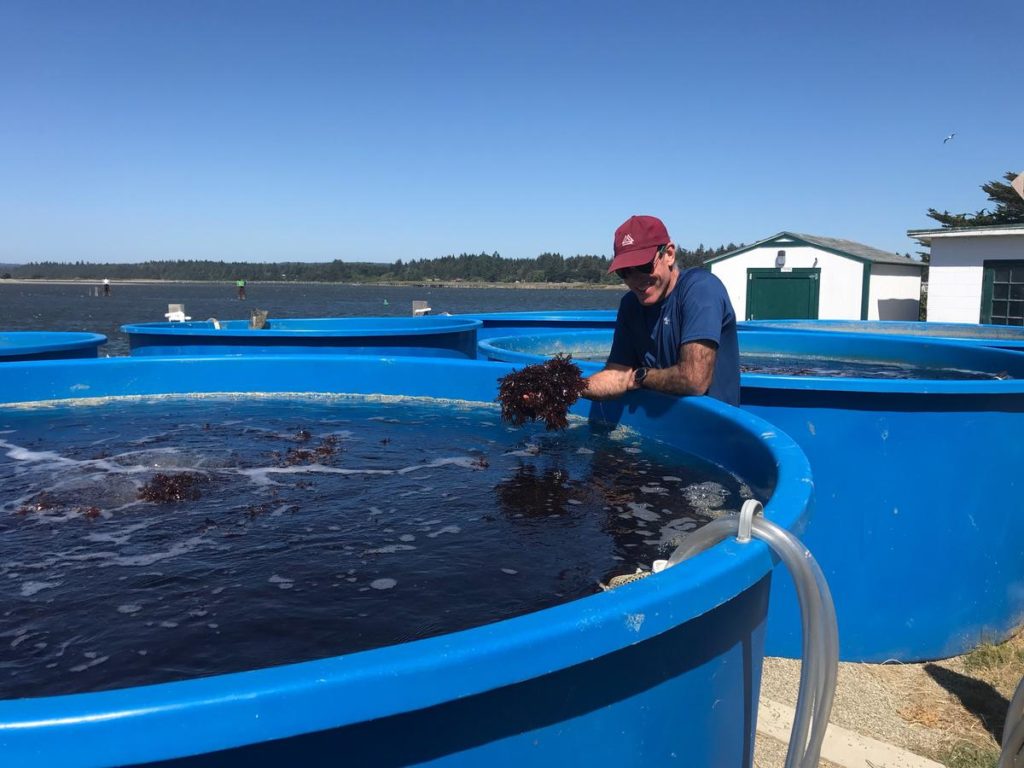
Seaweed farmer Jeff Holiman checks the Oregon Dulse tanks at the Port of Bandon Wednesday, July 24, 2019. CREDIT: CHUCK TOOMBS / OREGON DULSE
So does the seaweed really taste like bacon? Postdoctoral researcher Matt Hawkyard offered visitors a handful fresh out of the lab tanks in Newport on Monday. It resembled a red-leaf lettuce with a little more chewiness and crunch — and with a predominantly salt and savory flavor.
“I always tell people it has notes of bacon in the same way that wine has notes of chocolate — trying to tamp down expectations a little bit,” Hawkyard told public radio.
The commercial seaweed farmers in Oregon are not positioning the product as a bacon substitute either, rather as an eco-friendly sea vegetable rich in vitamins, minerals and protein.
Culinary testing performed by OSU in Portland in 2015 found the strongest bacon flavor came out when fresh dulse was smoked, pan-fried or deep-fried.
“It has a lot of potential not only for Oregon but globally,” Langdon told public radio on Wednesday. “The problem arises from the fact that it is a very new type of farming. So there are a lot of things that either we don’t have a good economic handle on or we don’t know really what the true costs are. We haven’t got to the stage where we are able to reduce costs.”
Last year, the National Oceanic and Atmospheric Administration awarded Oregon State a three-year grant to try to develop less expensive methods of growing dulse. Langdon is a co-principal investigator on that project alongside a chemical engineering professor. The testing involves cultivating the nutritious seaweed on flat, mesh panels submerged in tanks on land and in coastal saltwater.
Separately, Langdon said his lab collaborated with a Japanese university on a mouse experiment to study possible anti-obesity properties of dulse. The published results showed improved metabolism in overweight mice who were fed a small supplement of powdered dulse.
In other parts of the world, dulse has been harvested in the wild for a long time on a small scale. Specialty food companies based in New England and eastern Canada sell dried dulse online or through natural food stores for use as a garnish, nutritional supplement or spice.
Oregon State researchers originally got involved with Pacific dulse well over a decade ago with an entirely different focus. They worked on whether the red seaweed could be used as food for farmed abalone.
Related Stories:
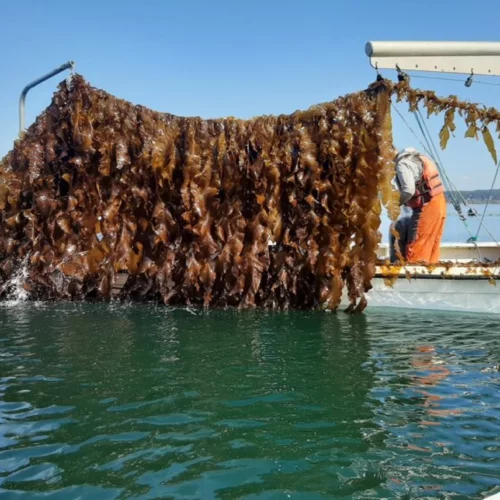
Swelling school of seaweed farmers looking to anchor in somewhat choppy Northwest waters
Prospective kelp growers who want to join the handful of existing commercial seaweed farms in the Pacific Northwest are having to contend with a lengthy permitting process. It’s gotten contentious in a few cases, but even so, at least a couple of new seaweed farms stand on the cusp of approval. Their harvests could be sold for human food, animal feed or fertilizer.
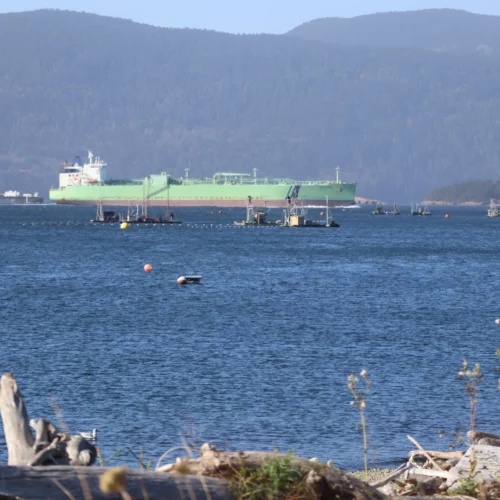
Rising Tide: Pacific Northwest Could Soon Double Or Triple Its Small Number Of Seaweed Farms
There’s a rising tide of interest in opening seaweed farms in the Pacific Northwest. If even half of the current applicants succeed, it would more than double the small number of commercial seaweed growing operations in Oregon and Washington state.
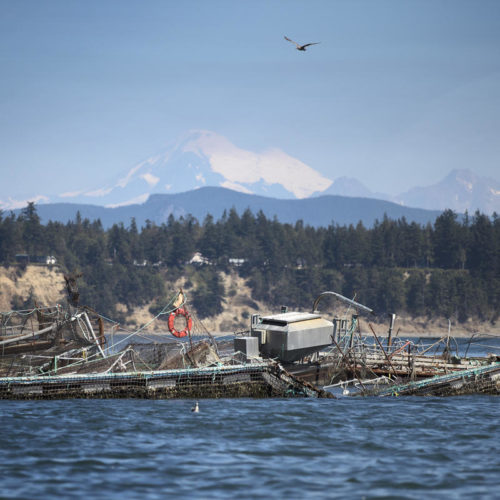
Washington Legislature Passes Atlantic Salmon Farm Ban
The Washington Legislature has approved a phase out of Atlantic salmon farming in state waters and sent the measure to the desk of Gov. Jay Inslee, who is expected to sign it.















